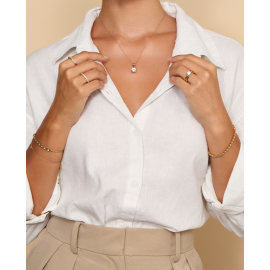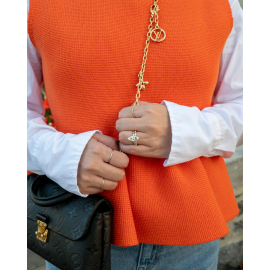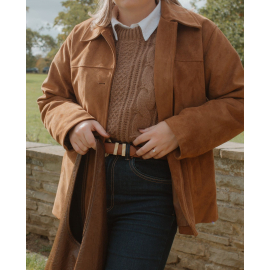Price match guarantee

We’ve teamed up with Klarna to provide flexible payment options, allowing you to shop the way you want. With Klarna, you can split your payment into 3 instalments or choose to pay later, making your shopping experience smoother and more convenient. Your order total must be between £100 and £499 to qualify.

We’ve teamed up with Klarna to provide flexible payment options, allowing you to shop the way you want. With Klarna, you can split your payment into 3 instalments or choose to pay later, making your shopping experience smoother and more convenient. Your order total must be between £100 and £499 to qualify.

January 27, 2021 | by Admin
It is law within the UK that every item of precious metal sold such as Platinum, Gold, Silver is stamped labelling the item with the type of metal it is. Platinum pieces which weigh less than 0.5 grams, 18ct Gold and Palladium pieces weighing less than 1.0 gram and Silver pieces weighing less than 7.78 grams are except from hallmark.
At Diamonds Factory all our products are hallmarked as per UK hallmarking law from London Assay Office (The GoldSmith Company)
The Goldsmiths' Company Assay Office is the oldest assay office in the United Kingdom. It has provided hallmarking services since The Goldsmiths' Company was founded in the 1300s. The company received its royal charter in 1327 and ranks 5th in order of precedence of the 12 Great Livery Companies of the City of London.
Hallmarking dates back to the 1300s when Edward I of England passed a law requiring any item made of silver, which was offered for sale, to be at least of equal quality as that of the coin of the realm (silver currency). The wardens of The Goldsmiths' Company were tasked with visiting workshops in the City of London to assay (test) silver articles. If these articles were found to be below standard they were originally destroyed and the metal forfeited to the King. If they passed, each article received the King's mark of authentication - the mark of a leopard's head. By 1478, there were several hundred workshops and merchants manufacturing silver articles in the City of London. It was not possible for the wardens to visit them all so the merchants were ordered to bring their items to Goldsmiths' Hall for testing and marking and a permanent Assay Office was established in the building. This is the origin of the term hallmark - struck with the King's mark at Goldsmiths' Hall.
In 1544 the Goldsmith's Company adopted the King's mark as their town mark and the mark of the leopard's head is now internationally recognised as the mark of this assay office.
The Goldsmiths's Company Assay Office is still based at Goldsmiths's Hall and remains the oldest company in Britain to be continually trading from the same site. However, it also has two satellite offices; at Greville Street in Hatton Garden in the heart of the London jewellery quarter and within a high security complex near London's Heathrow airport. It now has a new off-site facility within the Dalston-based jewellery manufacturer, Allied Gold. This is the first time in the Assay Office's 700 year history that it has opened permanent hallmarking services on a customer's premises.
In addition to hallmarking, the office has now expanded its range of services to support the jewellery trade and enforcement authorities. It offers a variety of specialist analytical services including nickel, lead & cadmium testing, antique silver dating, non-destructive compositional analysis, plating thickness measurement and a melt and assay service for scrap precious metal carried out in their fully independent on-site laboratory. Other services offered are a jewellery valuation service, laser marking, trading standards assistance, high quality photography and a comprehensive range of training and educational seminars, lectures and specialist events.






Most people love diamonds, and as the saying goes “diamonds are a girl's best friend”. They have long been linked to romance and famed for their signature beauty and sparkle. Today, diamonds are used in all types of jewellery but are most commonly associated with engagement rings. In this article, we take a look at diamond meaning, origin, colours and symbolism in jewellery.
_Solitaire
Origin of diamonds meaning
The origin of the meaning of a diamond comes from Ancient Greece where the Greeks would refer to them as "adamas", which means invincible. Ancient Greeks would wear diamonds in battle as a symbol of strength and with the belief that the diamonds would make them unconquerable.
Diamonds have long been known, throughout history, for their strength and beauty. They are considered the stone of champions, and this is why many leaders have worn them. The fact that diamonds symbolised invincibility derives from how strong the stone is, as it is the hardest naturally occurring material and rates as 10 on the Mohs scale of hardness.
Engagement ring tradition origins
The engagement ring tradition originates from Ancient Rome. In Roman custom, wives would wear rings that were attached to small keys as a symbol of their husband's ownership.
Since then, the engagement ring has evolved throughout history. The first recorded diamond engagement ring was commissioned by Archduke Maximillian of Austria, in 1477 for Mary of Burgundy. However, diamond engagement rings only became very popular after the 1947 De Beers campaign.
Diamonds colours meaning
Almost everyone knows the clear (white) diamond, but in fact, there are many other diamond colours too. A diamond gets its colour by trace elements interacting with carbon atoms during the formation process. Different chemical elements create a different hue. Diamond colours are associated with different meanings and symbolism. Here they are explained:
Red diamonds
Red diamonds symbolise courage and are extremely rare and valuable.
Orange diamonds
Orange diamonds symbolise enthusiasm and energy and are one of the rarest diamond colours.
Yellow diamonds
Yellow diamonds symbolise happiness and friendship. They are one of the most common fancy coloured diamonds and make a good alternative for an engagement ring.
Pink diamonds
Pink diamonds symbolise romance, joy and creativity. They are quite rare and are very beautiful.
Blue diamonds
Blue diamonds symbolise royalty and power. They are quite rare and, if you choose to give a blue diamond, it represents respect and love for the recipient.
Brown diamonds
Brown diamonds symbolise humility. They represent balance and inner strength.
Black diamonds
Black diamonds symbolise eternal and unchanging love. They are also associated with action, energy and passion.
Diamond symbolism in jewellery
Diamonds symbolise love and beauty in jewellery. It can be love for a family member or friend or a romantic partner. Engagement rings and eternity rings are given in romantic relationships and symbolise everlasting love. Diamond pendants and earrings are just as suitable for your mother or daughter as they are for your wife or friend.
Diamond meaning associations
Diamonds are associated with strength, love and health. As we have uncovered, throughout history, diamonds have been worn by leaders or power figures to symbolise strength and invincibility. Diamonds have also been associated with good health and represent long life and good heart health. Diamonds have long been linked to the heart and are often associated with an everlasting love. It is one of the reasons why diamond rings are offered during a marriage proposal today.
Why do diamonds symbolise love?
Diamonds symbolise love because of their strength and invincibility along with the fact they are associated with marriage proposals. For example, during the Renaissance, some started using diamonds in engagement rings to symbolise their unbreakable love and bond. They are thought to represent strength and beauty within love and, since the De Beers campaign in 1947, have become the chosen stone for engagement rings.
We have learned that diamonds are not only famed for their beauty and strength but are associated with good health and a happy, long-lasting relationship. Today they are used throughout all types of jewellery and are particularly popular for eternity rings, earrings and of course - engagement rings.